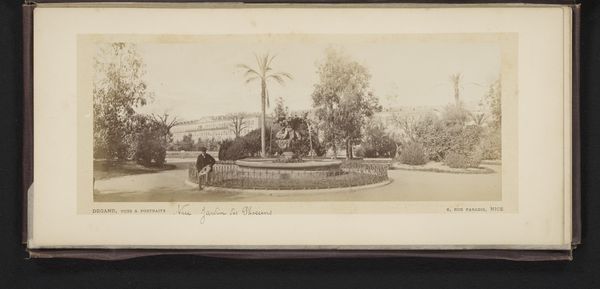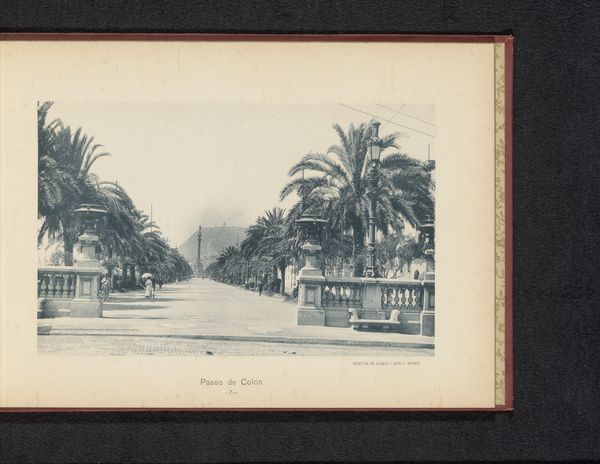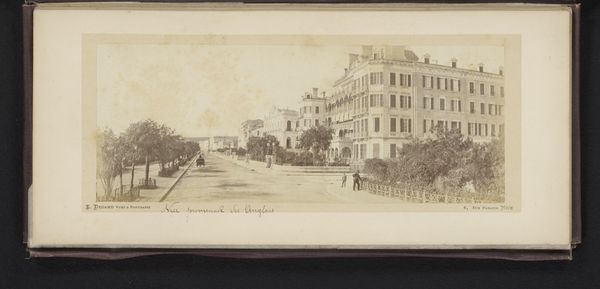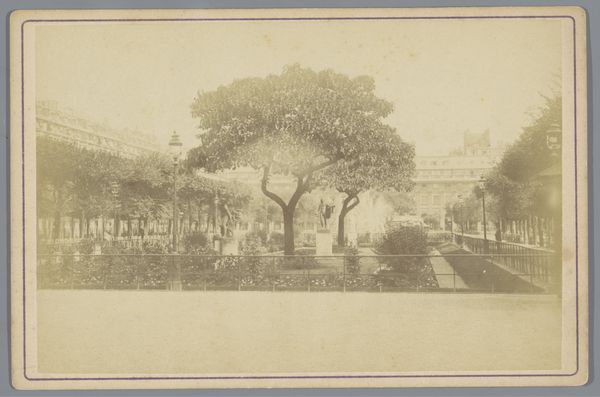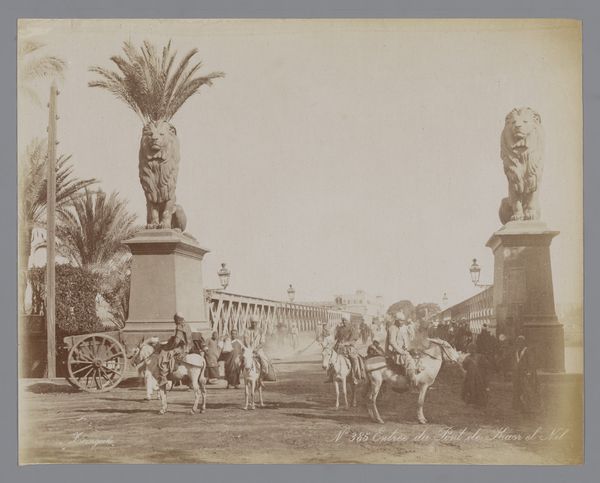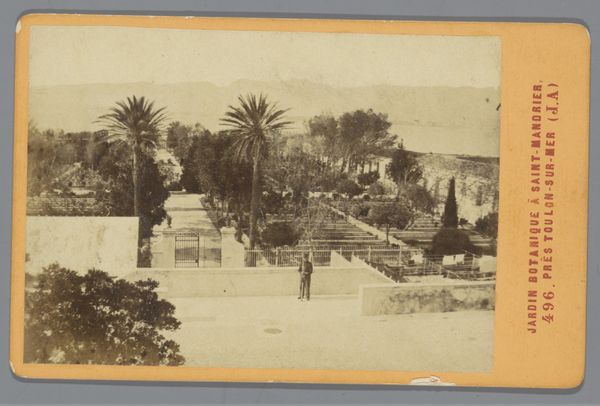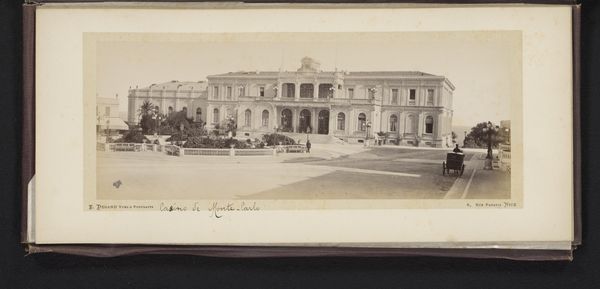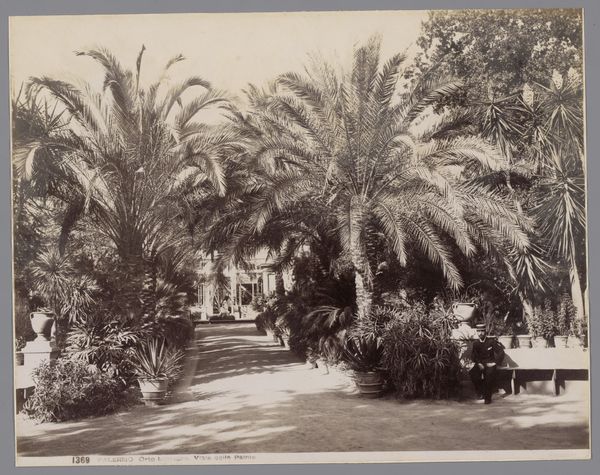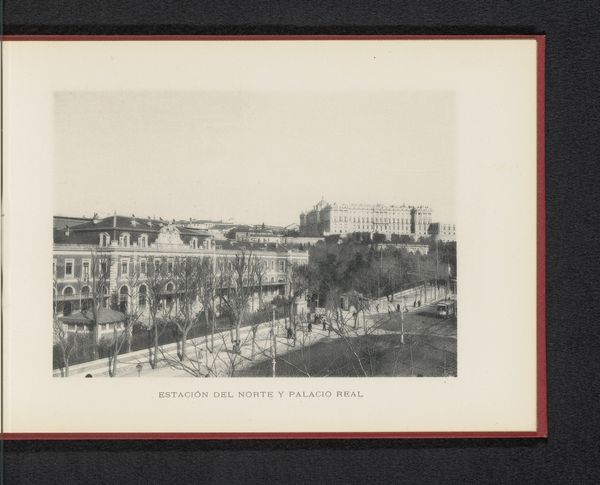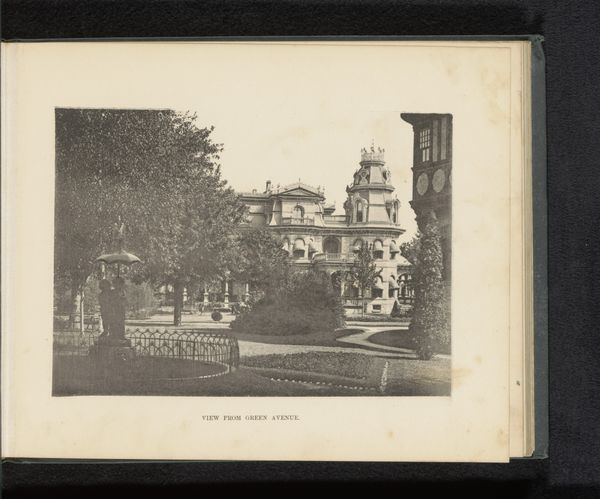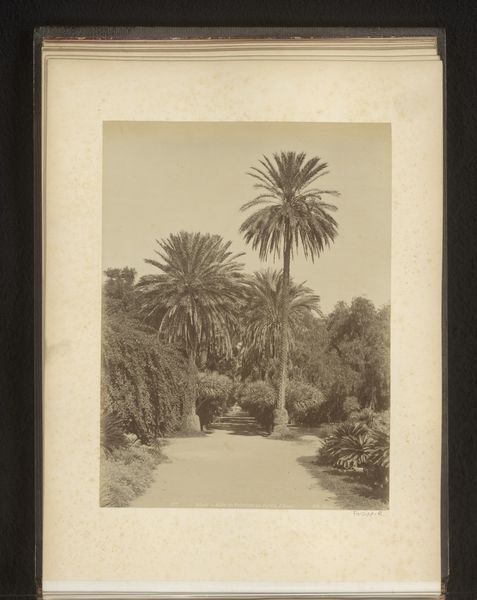
photography
#
pictorialism
#
landscape
#
photography
#
cityscape
Dimensions: height 210 mm, width 268 mm
Copyright: Rijks Museum: Open Domain
Curator: Here we have an intriguing photograph by Étienne Neurdein, titled "Gezicht op La Place d'Armes te Blida," taken sometime between 1880 and 1900. Editor: My immediate impression is one of tranquility, almost sepia-toned serenity. The composition is quite balanced; a stately palm takes center stage, grounding the scene. Curator: Indeed. Neurdein’s formal arrangement divides the photograph into distinct planes, foregrounding the fountain and palm before drawing the eye toward the building facade and the figures inhabiting the square beyond. I am captivated by the semiotic interplay between the exoticized palm and the very Western architectural presence. Editor: I wonder what the locals felt, witnessing their town center meticulously captured by a European photographer. Pictorialism aimed to elevate photography to the level of painting through soft focus and atmospheric effects. Curator: You’re absolutely correct. Pictorialism, even within a seemingly documentary style such as this cityscape, subtly manipulates perspective. This romanticized approach, for instance, would serve a colonialist vision back in Europe, shaping perceptions and confirming notions of exotic, easily governed lands. Editor: Absolutely. The photographic medium offered powerful opportunities for those in power to record and study subject peoples. It wasn’t simply a neutral representation; it shaped perceptions and informed colonial policies. Curator: Notice too, how the composition draws your eyes directly to the base of the palm in the circle. The contrast is expertly executed, the tonal modulations creating a pleasing image with many soft corners. Editor: So, what appeared to be a placid, aesthetically satisfying photograph actually hides layers of socio-political dynamics from a colonial past. Quite interesting to view such dynamics played out formally. Curator: It prompts a reflection on the gaze itself, who holds it, and the power it carries. I find myself now drawn to what is left outside the image and how our reception is framed as a result. Editor: Yes, photography invites us to deconstruct, looking not only at what is, but what it means in the continuum of image construction and use. Thank you for allowing me to examine my biases with you!
Comments
No comments
Be the first to comment and join the conversation on the ultimate creative platform.
